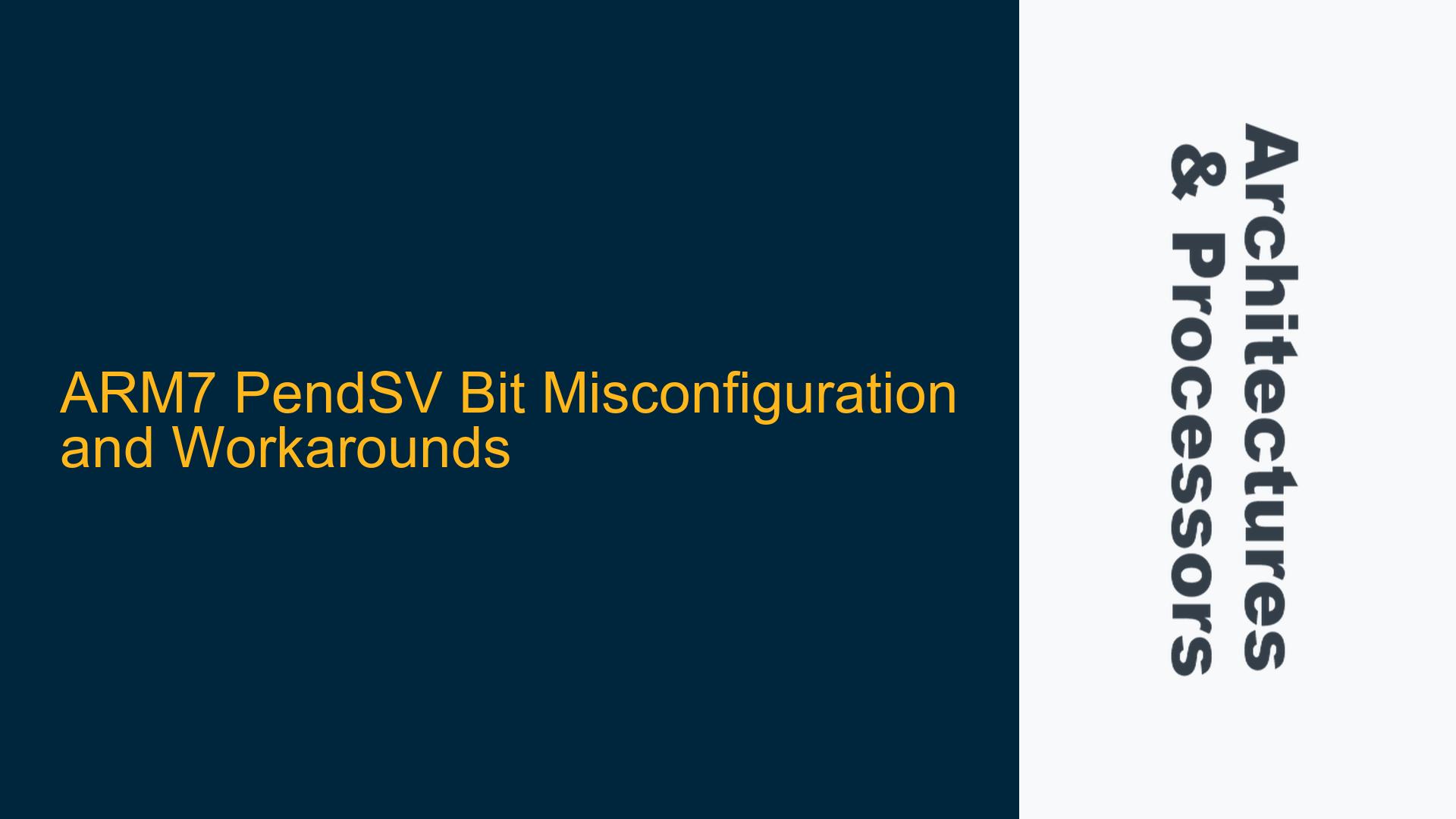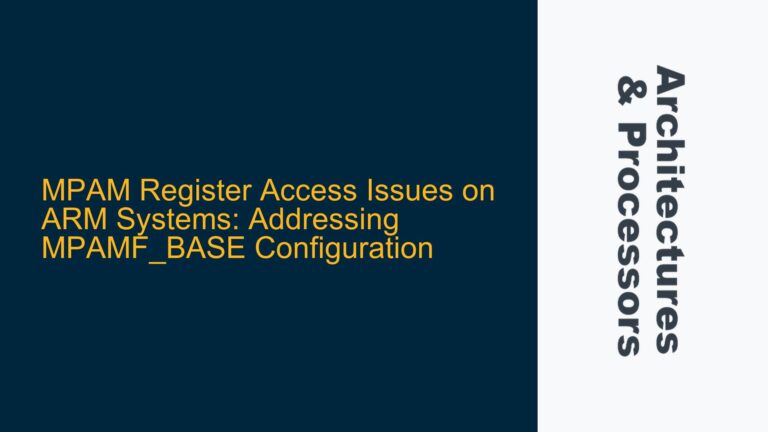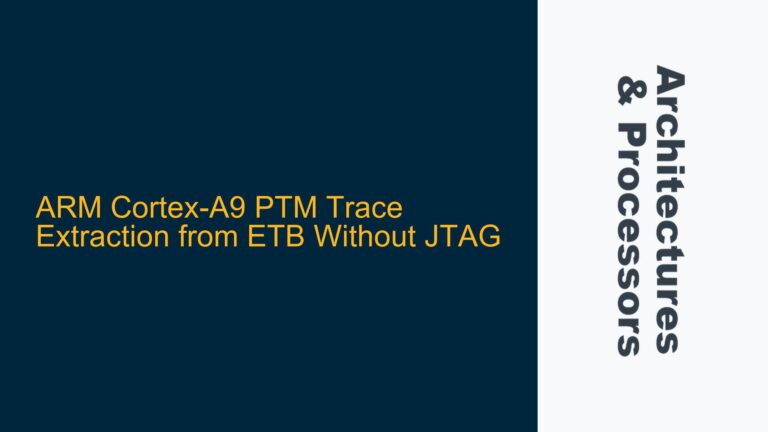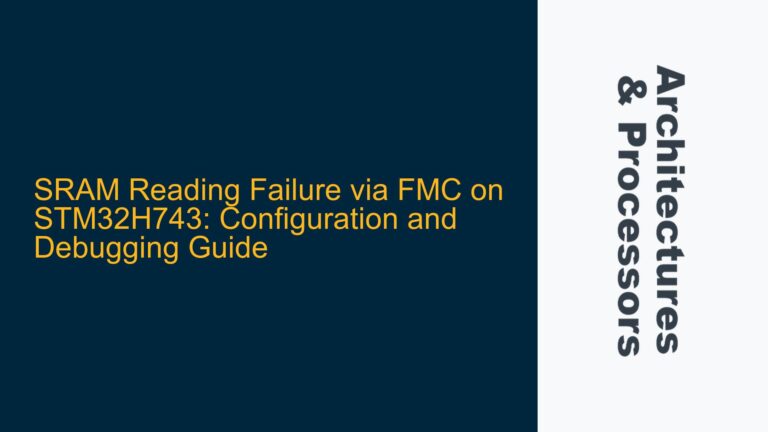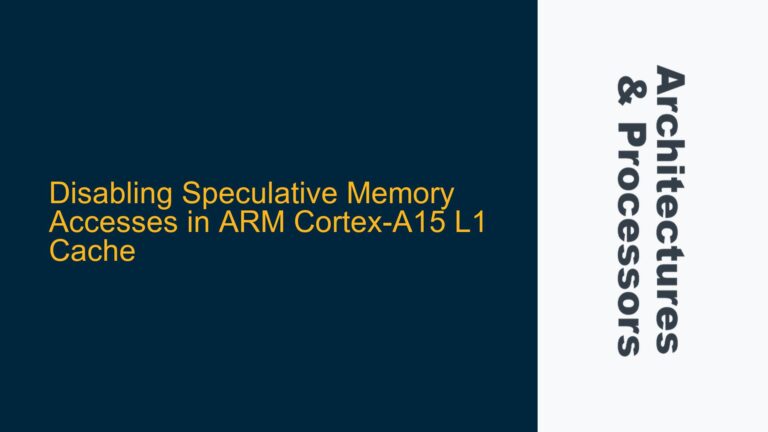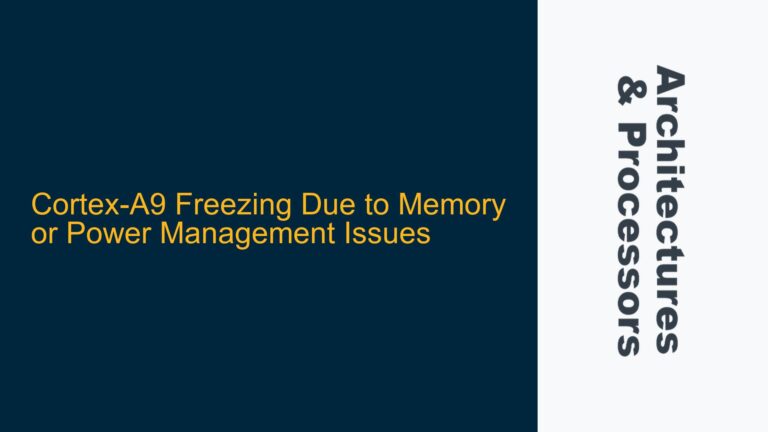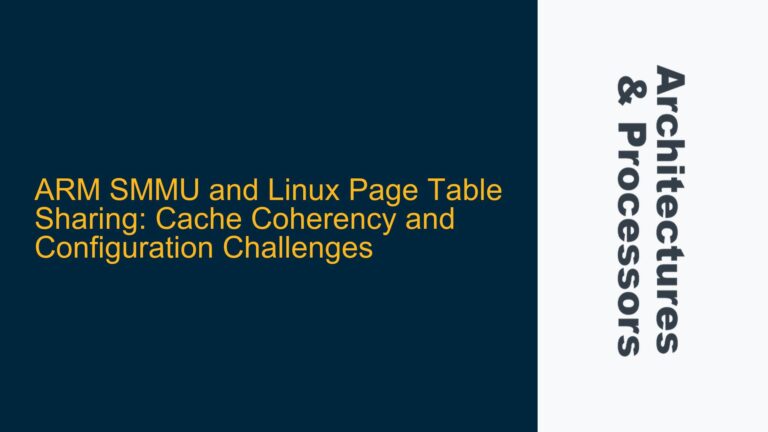ARM7 PendSV Bit Misunderstanding and Implementation Challenges
The PendSV (Pendable Service Call) bit is a critical feature in ARM Cortex-M processors, designed to facilitate context switching and deferred system service calls. However, a common misconception arises when developers attempt to implement PendSV-like functionality on ARM7 processors, which do not natively support the PendSV feature. This misunderstanding often leads to incorrect implementations, system instability, or inefficient workarounds. The ARM7 architecture, based on the ARMv4T instruction set, lacks the advanced system control features found in Cortex-M processors, such as the Nested Vectored Interrupt Controller (NVIC) and the PendSV exception. This architectural difference necessitates a deeper understanding of ARM7’s interrupt handling mechanisms and the development of custom solutions to emulate PendSV-like behavior.
ARM7 processors rely on a simpler interrupt model compared to Cortex-M processors. The ARM7 architecture supports two interrupt types: IRQ (Interrupt Request) and FIQ (Fast Interrupt Request). These interrupts are managed through the Program Status Register (CPSR) and the Interrupt Enable/Disable bits. Unlike Cortex-M processors, ARM7 does not have a dedicated PendSV exception or a system handler priority register. This limitation requires developers to implement custom interrupt handling mechanisms to achieve similar functionality.
The primary challenge lies in the fact that ARM7 processors do not have a built-in mechanism to defer interrupt handling to a lower priority context. In Cortex-M processors, PendSV is specifically designed to handle this scenario, allowing high-priority interrupts to preempt lower-priority tasks without immediately invoking the context switch. This deferred handling is crucial for real-time operating systems (RTOS) and multitasking environments, where context switching must be carefully managed to ensure system stability and performance.
To address this limitation, developers often resort to using IRQ interrupts to emulate PendSV-like behavior. This approach involves setting a software flag or mask to indicate that a deferred service call is required. The IRQ handler then checks this flag and invokes the appropriate service routine when the system returns to a lower priority context. While this method can achieve the desired functionality, it introduces additional complexity and potential pitfalls, such as race conditions, improper interrupt prioritization, and inefficient context switching.
ARM7 IRQ-Based PendSV Emulation and Potential Pitfalls
The most common approach to emulating PendSV functionality on ARM7 processors involves using the IRQ interrupt mechanism. This method requires careful management of interrupt priorities, software flags, and context switching routines. The IRQ interrupt is typically used to handle peripheral events and other time-critical tasks, making it a suitable candidate for emulating PendSV-like behavior. However, this approach is not without its challenges and potential pitfalls.
One of the primary issues with using IRQ interrupts to emulate PendSV is the lack of built-in prioritization and nesting capabilities. In Cortex-M processors, the NVIC provides a flexible and configurable interrupt prioritization scheme, allowing PendSV to be assigned a lower priority than other system exceptions. This ensures that PendSV is only invoked when no higher-priority tasks are pending. In contrast, ARM7 processors do not have a native prioritization mechanism for IRQ interrupts, making it difficult to ensure that PendSV-like behavior is correctly implemented.
Another challenge is the potential for race conditions and improper context switching. When using IRQ interrupts to emulate PendSV, developers must ensure that the software flag or mask used to indicate a deferred service call is properly synchronized with the interrupt handler. Failure to do so can result in missed service calls, incorrect context switching, or even system crashes. Additionally, the IRQ handler must be carefully designed to avoid excessive overhead and ensure that the system remains responsive to other interrupts.
The lack of a dedicated PendSV exception also complicates the implementation of context switching in RTOS environments. In Cortex-M processors, PendSV is specifically designed to handle context switching, allowing the RTOS to defer the switch until it is safe to do so. This ensures that high-priority interrupts can preempt lower-priority tasks without immediately invoking a context switch. In ARM7 processors, developers must implement custom context switching routines within the IRQ handler, which can be error-prone and inefficient.
To mitigate these challenges, developers must carefully design their interrupt handling and context switching routines. This includes implementing proper synchronization mechanisms, optimizing the IRQ handler for minimal overhead, and ensuring that the system remains responsive to other interrupts. Additionally, developers should consider using software-based prioritization schemes to emulate the behavior of the NVIC and ensure that PendSV-like functionality is correctly implemented.
Implementing Custom PendSV-Like Behavior on ARM7 Processors
Implementing PendSV-like behavior on ARM7 processors requires a combination of careful design, efficient coding practices, and thorough testing. The following steps outline a recommended approach to achieving this functionality:
-
Define a Software Flag or Mask: The first step in emulating PendSV-like behavior is to define a software flag or mask that indicates when a deferred service call is required. This flag should be accessible to both the main application code and the IRQ handler. The flag can be implemented as a global variable or a bit in a status register, depending on the specific requirements of the application.
-
Set the Flag in the Main Application Code: When a deferred service call is required, the main application code should set the software flag or mask. This can be done using a simple assignment or bitwise operation. It is important to ensure that the flag is set atomically to avoid race conditions and ensure proper synchronization with the IRQ handler.
-
Check the Flag in the IRQ Handler: The IRQ handler should check the software flag or mask at the beginning of its execution. If the flag is set, the handler should clear the flag and invoke the appropriate service routine. This ensures that the deferred service call is only executed when the system returns to a lower priority context.
-
Implement Proper Synchronization Mechanisms: To avoid race conditions and ensure proper synchronization, developers should implement appropriate synchronization mechanisms, such as disabling interrupts or using atomic operations, when accessing the software flag or mask. This ensures that the flag is not modified by the main application code while the IRQ handler is checking or clearing it.
-
Optimize the IRQ Handler for Minimal Overhead: The IRQ handler should be optimized for minimal overhead to ensure that the system remains responsive to other interrupts. This includes minimizing the number of instructions executed in the handler, avoiding unnecessary memory accesses, and using efficient coding practices.
-
Implement Context Switching Routines: If the application requires context switching, developers should implement custom context switching routines within the IRQ handler. This includes saving and restoring the processor state, updating the stack pointer, and switching between task contexts. It is important to ensure that these routines are efficient and do not introduce excessive overhead.
-
Test and Validate the Implementation: Finally, developers should thoroughly test and validate the implementation to ensure that it behaves as expected under all conditions. This includes testing for race conditions, verifying proper synchronization, and ensuring that the system remains responsive to other interrupts.
By following these steps, developers can successfully emulate PendSV-like behavior on ARM7 processors. While this approach requires additional effort and careful design, it provides a viable solution for implementing deferred service calls and context switching in ARM7-based systems.
Conclusion
Emulating PendSV-like behavior on ARM7 processors is a challenging but achievable task. By understanding the limitations of the ARM7 architecture and implementing custom interrupt handling and context switching routines, developers can achieve similar functionality to the PendSV exception found in Cortex-M processors. However, this approach requires careful design, efficient coding practices, and thorough testing to ensure system stability and performance. By following the recommended steps and best practices outlined in this guide, developers can successfully implement PendSV-like behavior on ARM7 processors and overcome the challenges associated with this architectural limitation.
